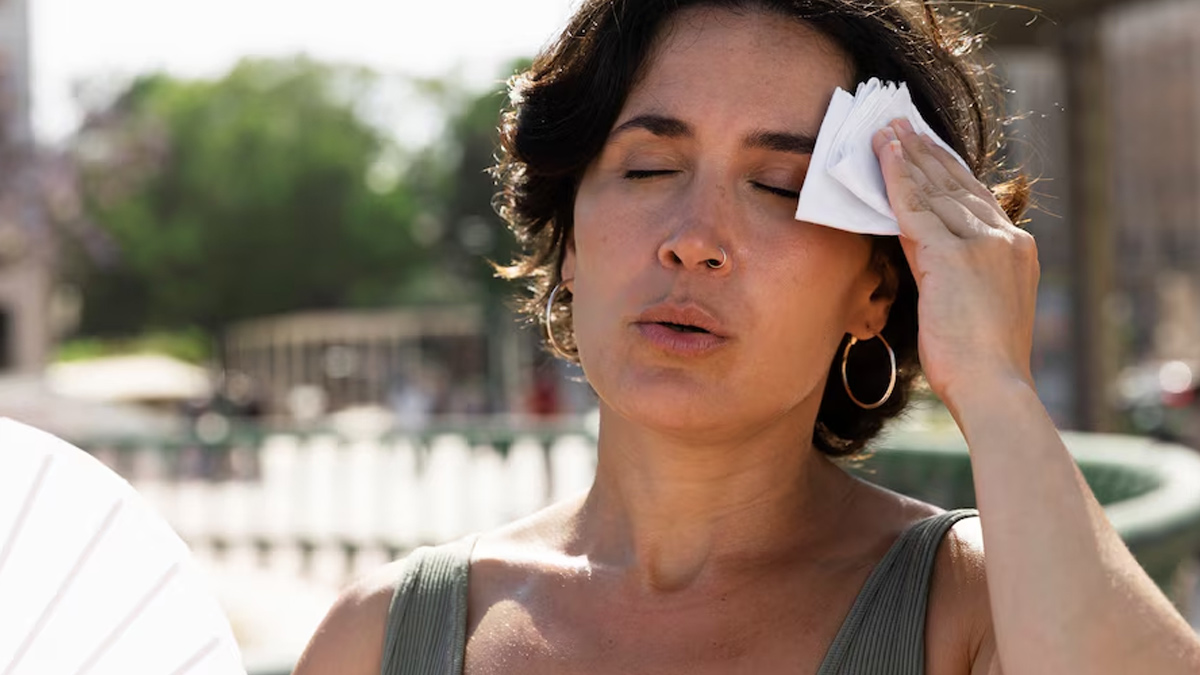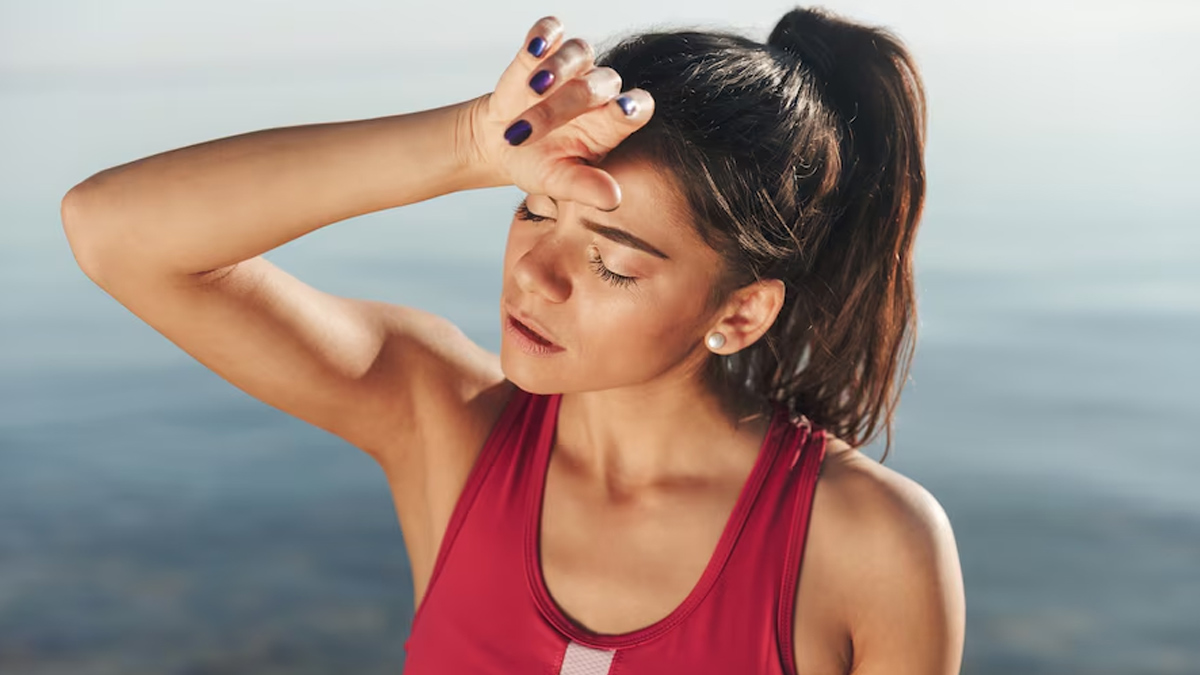
Heat-related illness is a group of medical conditions related to elevation in body temperatures usually above 40 degrees centigrade. Severity can vary from a mild form of heat exhaustion to a severe life-threatening medical condition called heat stroke. This can lead to a variety of serious symptoms, including confusion, dizziness, nausea, vomiting, and even death. We spoke to our expert Dr Shiva Kumar R, Head and Senior Consultant – Neurology, Manipal Hospital, Sarjapu, Bengaluru, who explained this heat stroke, its symptoms, causes, risk factors, complications, and preventive measures.
Table of Content:-
Understanding Heat-Related Illness

“Heat stroke is diagnosed if an individual has symptoms of the central nervous system with hyperthermia (>40.5 degrees C or > 105 degrees F) in the setting of a large environmental heat load. This condition is more common during summer”, said Dr Kumar.
Mechanism of Heat Loss
Dr Kumar added, “Major mechanism of heat loss from the body in a hot environment is evaporation. If humidity is more than 75% this mechanism usually becomes ineffective and increases the risk of hyperthermia and heat stroke. An increase in the body temperature is associated with an increase in oxygen consumption, which in turn increases the heart rate and respiration (hyperpnoea).”
Also Read: Heat Illness: Here Are 7 Tips To Protect Your Child From Heat-Related Issues
Types of Heat-Related Illness

- Exertional Heat Stroke: Occurs in young individuals engaging in heavy exercise (athletes, military personnel, labourers) in high temperatures and humidity.
- Classic Heat Stroke: Typically non-exertional, affecting those with underlying medical conditions (cardiac, psychiatric, neurological issues, obesity) and at extreme ages. Certain medications (beta-blockers, anticholinergics, diuretics) and recreational drugs cocaine, ecstasy, heavy alcohol use) increase the risk.
Risk Factors for Heat Stroke

Dr Kumar listed the risk factors for heat stroke as follows:
- Dehydration
- Pregnancy
- Obesity
- Social isolation
- Poor physical condition
- Lack of acclimatisation
- Lack of air conditioning
- Diabetes
- Use of drugs like NSAIDs and muscle relaxants
Symptoms of Heat Stroke
Heatstroke signs and symptoms include:
- High body temperature
- Confusion or Altered behaviour
- Altered sweating
- Associated nausea and vomiting with flushed skin
- Rapid breathing with a racing heart rate
- Headache
Complications Of Heat Stroke
Several issues may arise from heatstroke, contingent on the duration of elevated body temperature. Dr Kumar listed its severe complications as follows:
- Vital organ damage: Heatstroke can result in lasting damage to your brain or other essential organs if you do not respond quickly enough to lower your body temperature.
- Death: If heatstroke is not treated promptly and appropriately, it can be lethal.
Immediate Actions for Heat Stroke
As you wait for emergency care, take quick steps to cool the hot person.
- Move the person to a cooler place.
- Remove excess clothing.
- Cool the person using any available methods (cool tub of water, shower, garden hose, cool water sponging, fan with mist, ice packs, or cold wet towels on head, neck, armpits, and groin).
According to the Journal of Intensive Care, heat stroke can advance to multiorgan dysfunction syndrome, so swift and efficient cooling, along with close monitoring and targeted treatment for affected organs, is crucial for successful treatment.
Also Read: Beat the Heat: Tips For Quality Sleep During Hot Summer Nights
Preventive Tips For Heat Stroke

Heatstroke is predictable and preventable. Follow these measures to prevent heatstroke in hot weather, as listed by Dr Kumar:
- Wear loose-fitting, lightweight clothing: Wearing too much or tight-fitting clothing hinders proper body cooling.
- Protect against sunburn: Shield yourself outdoors with a wide-brimmed hat, sunglasses, and SPF 15+ broad-spectrum sunscreen. Apply liberally and reapply every two hours, especially when swimming or sweating to counter sunburn's heat-retaining effect.
- Drink plenty of fluids: Keeping hydrated supports sweat production and helps regulate body temperature.
- Be Cautious with Medications: Stay vigilant for heat-related issues if you're on medications that may impact your body's hydration and heat regulation.
- Do not leave anyone in a parked car: This is a common cause of heat-related fatalities in children. When left in the sun, the temperature inside a parked car can increase by 20°F (over 11°C) in just 10 minutes. Always remember to lock your parked car to prevent children from accessing it and not leave anyone inside, even if the windows are cracked or the car is shaded.
- Don't overdo it in the heat: If you're unable to evade intense activity in hot conditions, stay hydrated and take frequent breaks in a cool area. Plan physical exertion for cooler times, like early morning or evening. After treatment for exertional heat stroke, refrain from exercise for at least seven days.
- Get acclimated: Restrict exposure to heat during work or exercise until acclimated. Those unaccustomed to hot climates are particularly vulnerable to heat-related ailments. It may take weeks for your body to adapt to warmer temperatures.
- Be cautious if you're at increased risk: If medication or health conditions heighten heat risks, steer clear of heat and promptly address overheating symptoms. In intense hot-weather activities, ensure prompt access to medical aid.
Reducing Heat Stroke Risk in Sudden Heat Exposure
“Sudden temperature spikes, like early-summer heat waves or travel to hotter regions, can increase susceptibility to heat-related illnesses. Restrain activity for a few days to adjust to the change in climate”, added Dr Kumar.
[Disclaimer: This article contains information provided by an expert and is for informational purposes only. Hence, we advise you to consult your expert if you are dealing with any health issues to get the necessary treatment.]
Also watch this video
How we keep this article up to date:
We work with experts and keep a close eye on the latest in health and wellness. Whenever there is a new research or helpful information, we update our articles with accurate and useful advice.
Current Version